The Unseen Costs of Belize’s Sargassum Crisis
It’s a crisis that’s been creeping in for years but now, it’s hitting Belize’s coastline harder than ever. Sargassum is piling up in record amounts, and it’s costing local businesses thousands of dollars every single day. Since 2016, coastal communities have been battling the brown tide, but this year, the fight feels different. With no high-tech fix in sight, many are relying on manual labor, the only method that’s proven to work. Today, News Five’s Britney Gordon hit the beaches of San Pedro to see firsthand the effort it takes to keep the shores clean and the impact this ongoing battle is having on livelihoods. Here’s that report.

Britney Gordon, Reporting
If you were hoping for postcard-perfect views on the beaches of San Pedro today, you might’ve been surprised. Instead of turquoise waters and white sand, visitors were greeted by brown, rotting sargassum, a sight that’s become all too familiar. But for locals and business owners who’ve been battling this seaweed invasion all year, today’s haul was actually mild. Still, the fight continues. With tons of sargassum washing ashore for months, resorts and beach crews have been working overtime, shoveling, hauling, and spending thousands just to keep the coastline clean. One popular resort, choosing to stay anonymous, gave us a behind-the-scenes look at the effort it takes to protect paradise.
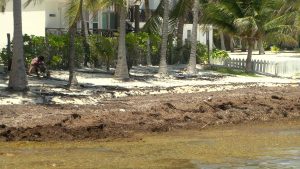
Voice of: Hotel Employee
Voice of: Hotel Employee, San Pedro
“The problem is once it hits the shoreline, it starts to decompose. Given the summer heat that we have in Belize and the temperatures of the waters along the shoreline, we are talking about forty-eight hours before it actually starts to decompose. You fast forward two days later, this stuff is almost solid and it starts to sink, and then there’s no way of getting it out of the water. A resort like ours who has a sea wall, for example. We have to resort to human labor. That’s the only way that we can get it out. We cannot use the conventional machines, the raking machines or nets that people suggest. It’s just impossible to use that here and given the depth of the water, because of the sea wall.”
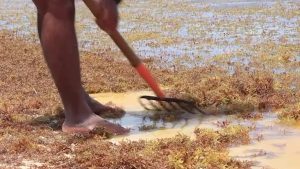 Every business along the shore has had to invest in a team of workers to maintain the beaches. And it’s no cheap task. It is costing them thousands of dollars every day; money that isn’t necessarily being earned back.
Every business along the shore has had to invest in a team of workers to maintain the beaches. And it’s no cheap task. It is costing them thousands of dollars every day; money that isn’t necessarily being earned back.
Voice of: Hotel Employee, San Pedro
“We are looking at about, on a daily basis to pickup trucks, average, they do fifteen to twenty loads, and we’re looking at anywhere from six to up to twenty persons working. The expense is about three thousand average a day, and given since March, coming towards April, it has not stopped. It hasn’t given us any relief at all. So we are working thirty plus days a month. So you do the math on that. It’s thirty days times three thousand dollars, and we’re talking about four months. We’re looking at about two hundred and fifty thousand plus just for this one resort.”
 Sargassum is toxic. Cleanup crews report sinus issues and headaches from the gases it releases. Resorts say workers don’t stick around long. One new hire told us the smell is rough, but he’s just grateful to have a job.
Sargassum is toxic. Cleanup crews report sinus issues and headaches from the gases it releases. Resorts say workers don’t stick around long. One new hire told us the smell is rough, but he’s just grateful to have a job.
Voice Of: Sargassum Cleanup Crew Member
“We shovel it out. On the beach side there, and then from there, we put it inn awa truck and ker it.”
Britney Gordon
“And so far, what has been the hardest part of it for you?”
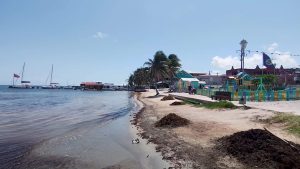 Voice Of: Sargassum Cleanup Crew Member
Voice Of: Sargassum Cleanup Crew Member
“Taking it out from here.”
 Britney Gordon
Britney Gordon
“You concerned about the health effects it might have on you?”
Voice Of: Sargassum Cleanup Crew Member
“I’m grateful for the work, stay active.”
Costs are piling up and businesses are suffering and it’s all because of sargassum. To assist these impacted businesses, the Belize Fund for a Sustainable Future has partnered with the Belize Hotel Association and the Belize Tourism Industry Association to distribute its Sargassum Emergency Response Grant. They are calling on businesses located in impacted areas in San Pedro, Caye Caulker, Placencia, Hopkins, Seine Bight and other offshore islands to apply for a grant of up to five thousand dollars to assist with the various cleanup efforts. Reynaldo Malik, President of the Belize Hotel Association explains why this grant is crucial.
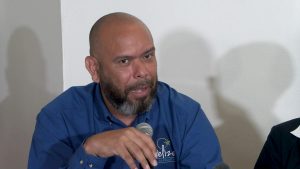
Reynaldo Malik
Reynaldo Malik, President, Belize Hotel Association
“There are so many different things that need to be taken into account. Cleaning the beach is not ab abc effort. We are also buttoning at the same time erosion. And so you can’t just go out there and rake up ten tons of sargassum and also take up a two tons of sand with it as well. Sand is not easily replaceable. It can be used for a variety of things. Labor mechanize equipment, even rental or paying third party people to pick up. Because we have to also, once we pick it off the beaches, we also have to dispose of it properly as well.”
The Belize Fund is allocating two hundred and fifty thousand dollars towards the initiative so that it can be accessed by the many impacted businesses across the country, while its greatly appreciated, many are hoping it’s the first step towards a greater relief plan as the sargassum continues to wash ashore.
Voice of: Hotel Employee, San Pedro
“We’re talking about health issues in the longer run. And there’s really no fund or grant that will assist in anything like that, in your health. They won’t cover your medical expenses. It will offer some sort of a relief. Yes. And I’m glad that we’re getting this grant for the communities that are suffering from this. And I applaud the effort from the. The administration. Whosoever is, basically making this happen. A big thank you, of course. And it, I hope it marks the beginning of something more or something more to come ahead assistance wise.”
Despite there being no clear end to the sargassum crises, the community is not giving up and the clean ups carry on. Britney Gordon for News Five.




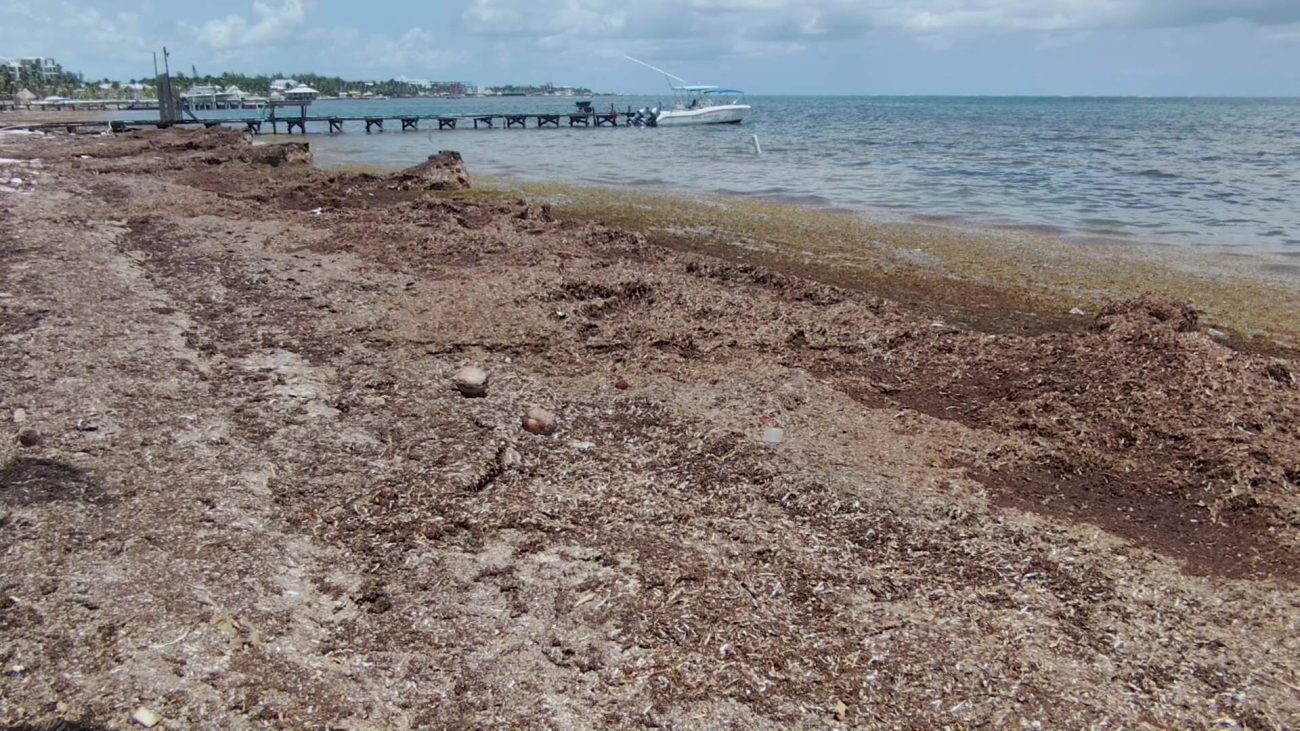

Facebook Comments